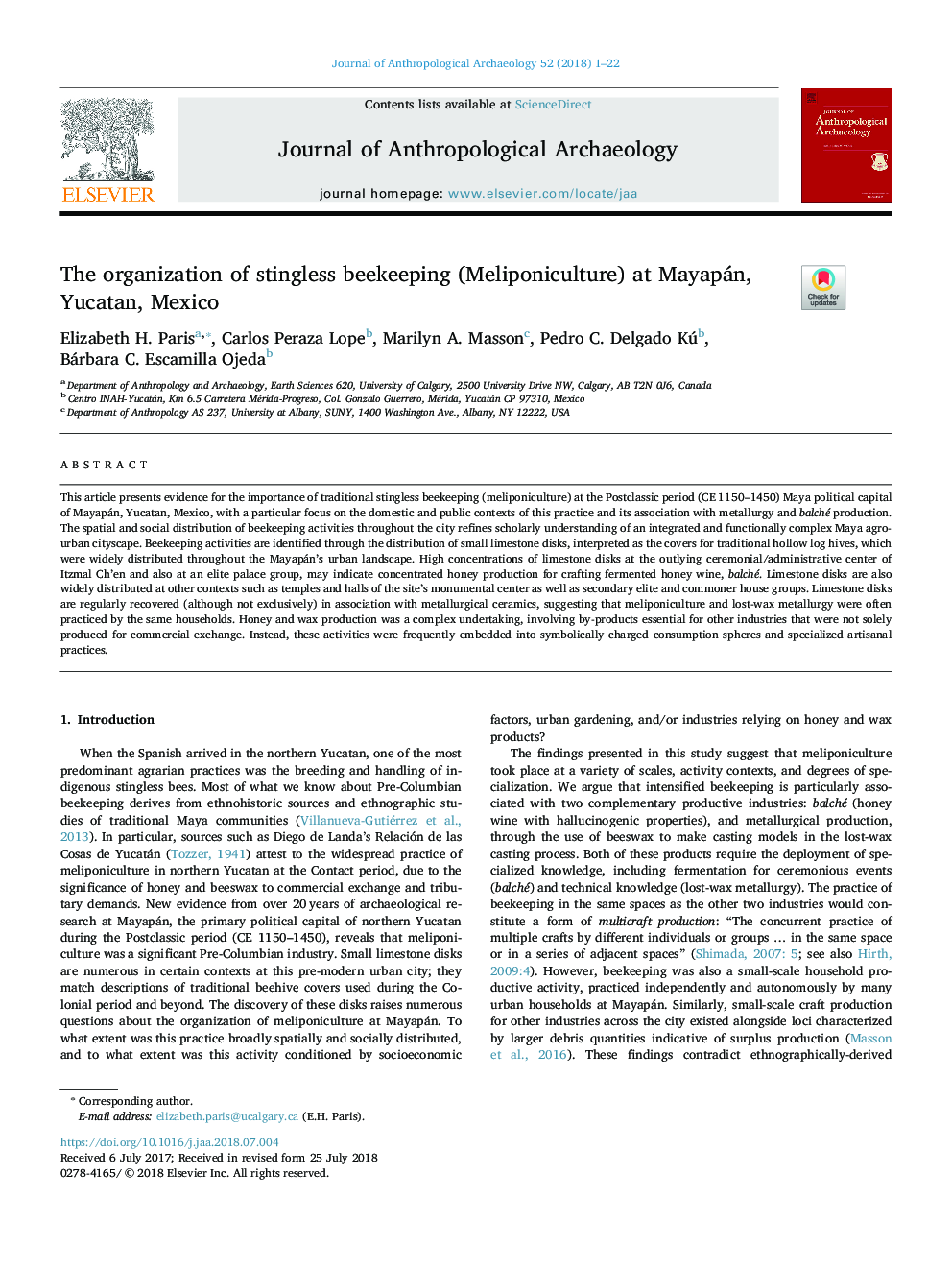| Article ID | Journal | Published Year | Pages | File Type |
|---|---|---|---|---|
| 9953154 | Journal of Anthropological Archaeology | 2018 | 22 Pages |
Abstract
This article presents evidence for the importance of traditional stingless beekeeping (meliponiculture) at the Postclassic period (CE 1150-1450) Maya political capital of Mayapán, Yucatan, Mexico, with a particular focus on the domestic and public contexts of this practice and its association with metallurgy and balché production. The spatial and social distribution of beekeeping activities throughout the city refines scholarly understanding of an integrated and functionally complex Maya agro-urban cityscape. Beekeeping activities are identified through the distribution of small limestone disks, interpreted as the covers for traditional hollow log hives, which were widely distributed throughout the Mayapán's urban landscape. High concentrations of limestone disks at the outlying ceremonial/administrative center of Itzmal Ch'en and also at an elite palace group, may indicate concentrated honey production for crafting fermented honey wine, balché. Limestone disks are also widely distributed at other contexts such as temples and halls of the site's monumental center as well as secondary elite and commoner house groups. Limestone disks are regularly recovered (although not exclusively) in association with metallurgical ceramics, suggesting that meliponiculture and lost-wax metallurgy were often practiced by the same households. Honey and wax production was a complex undertaking, involving by-products essential for other industries that were not solely produced for commercial exchange. Instead, these activities were frequently embedded into symbolically charged consumption spheres and specialized artisanal practices.
Related Topics
Social Sciences and Humanities
Arts and Humanities
History
Authors
Elizabeth H. Paris, Carlos Peraza Lope, Marilyn A. Masson, Pedro C. Delgado Kú, Bárbara C. Escamilla Ojeda,
